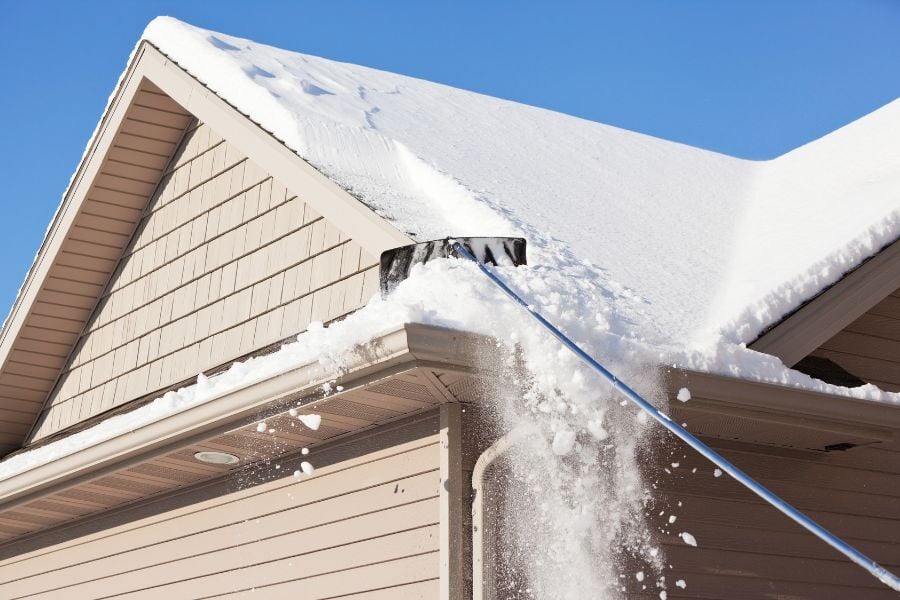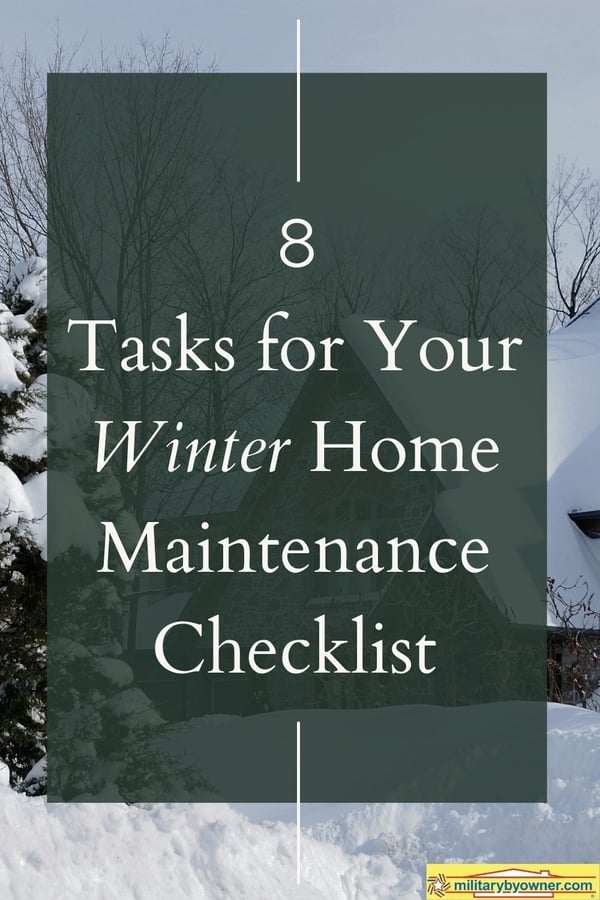8 Tasks for Your Winter Home Maintenance Checklist
That chilly draft sneaking in through the window isn’t just uncomfortable, it’s a reminder that your home may need some seasonal attention. Winter brings its own set of challenges, from heavy snow and ice to shorter days and pests seeking warmth indoors.
Whether you’re a homeowner or a renter, tackling a few key winter home maintenance tasks can protect your investment, improve comfort, and save money on costly repairs down the road.
Here are eight essential winter chores to add to your checklist.
 Photo by BanksPhotos from Getty Images Signature via Canva.com
Photo by BanksPhotos from Getty Images Signature via Canva.com
1. Inspect Your Roof
Snow, ice, and high winds can do serious damage if your roof isn’t in good shape. Use a ladder, or from the ground with binoculars, check for missing, cracked, or curling shingles. Pay extra attention to areas around chimneys, skylights, and vent pipes where leaks are most likely to start. If you notice anything suspicious, call a professional for a closer inspection. A small repair now can prevent major water damage later.
2. Clear Gutters and Downspouts
Clogged gutters can trap ice or force water to spill over, leading to foundation issues or siding damage. Remove leaves and debris, then run water through with a hose to ensure it drains freely. Buy extensions for your downspouts if they don’t extend at least four feet from your house. Take a quick lap around your home to confirm everything is good to go.
3. Keep Pests Out
Cold weather often drives mice, squirrels, and insects inside. Walk the perimeter of your home and seal gaps with caulk, weatherstripping, or steel wool around plumbing and utility lines. Check door sweeps and window frames for tight closure, and consider vent covers to block nesting birds. A few minutes of prevention now can save you from costly pest control bills later.
However, certain areas, like tongue-and-groove siding, trim pieces attached to siding, factory weep holes in window frames, and the panels of garage doors, are designed to “breathe” and shift with temperature changes. Blocking them can trap moisture and cause bigger problems down the road. Focus on filling cracks and gaps where critters can enter, but leave these intentional openings alone.
4. Store Yard Tools and Gear
Winter can be hard on outdoor equipment. Drain and coil garden hoses to prevent cracking, cover outdoor faucets with foam covers, and wipe down patio furniture before covering or storing it. Bring in fragile plants and empty terra-cotta pots, which can crack in freezing temperatures. Clean and oil your garden tools before stowing them away so they’ll be ready to use come spring.
 Photo by Irina Gutyryak from Getty Images via Canva.com
Photo by Irina Gutyryak from Getty Images via Canva.com
5. Brighten Your Space
Shorter winter days mean you’ll rely more on lighting. Clean out bugs and dust from fixtures, replace any burned-out bulbs, and keep extras on hand for quick swaps. Don’t forget the emergency lighting! Test flashlights and lanterns and stock up on fresh batteries in case of a power outage. Good lighting not only improves safety but also helps make your home feel more cozy and welcoming during dark winter evenings.
6. Change Filters and Test Detectors
Your HVAC system works overtime in winter. Help it run efficiently by replacing filters every 1–3 months. While you’re at it, test smoke alarms and carbon monoxide detectors (especially important if you’re using fireplaces, furnaces, or space heaters). Mark your calendar for the next filter change so it becomes routine rather than an oversight or afterthought.
7. Keep Rooms Warm and Cozy
Not every home is perfectly insulated, but there are small improvements you can make that add comfort. Reverse ceiling fans to push warm air downward, install thermal curtains to trap heat, and apply window film to reduce drafts. Even simple additions like area rugs or a decorative quilt hung on a wall can make a noticeable difference. Small touches add up, lowering heating costs while keeping your living spaces snug.
8. Prep Your Fireplace
If you have a fireplace, schedule a chimney sweep before using it daily. This ensures the chimney is clear of buildup and that the damper is functioning properly. And when it comes to the ashes, consider a metal container handy for ashes, and let them sit for several days before disposing of them. It’s also a good idea to store firewood at least five feet from the house to discourage pests. Clean glass doors with a vinegar solution or a little ash on a damp cloth for a natural scrub. A little prep makes cozy fires safer and more enjoyable!
Extra Winter Maintenance Tasks
Before the next cold snap, make sure your snow shovel is ready, your ice melt is stocked, and your car’s windshield washer fluid is topped off. Winter may be long, but with the right preparation, your home can stay safe, efficient, and comfortable until spring arrives.
Seasonal home maintenance doesn’t have to be time-consuming. Most of these tasks are simple, preventative steps that go a long way toward protecting your home. Setting aside a little time now reduces the risk of costly repairs, keeps your living spaces comfortable, and gives you peace of mind through the coldest months. Once spring arrives, you’ll be glad you put in the effort to keep your home safe, efficient, and ready for whatever comes next.






